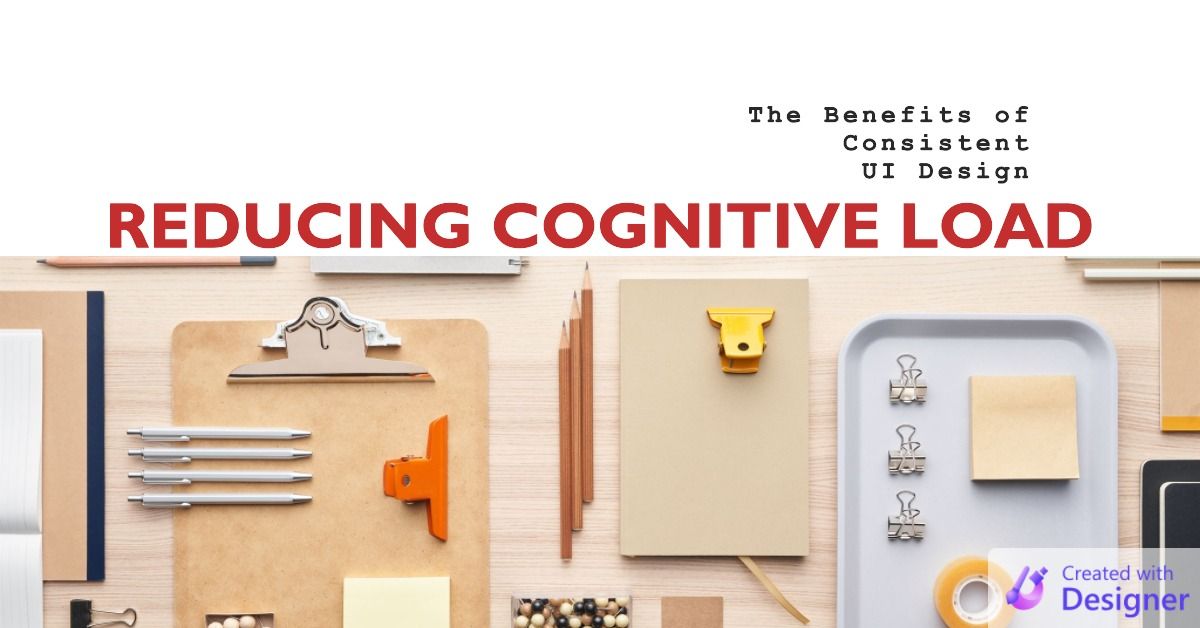Reducing Cognitive Load: The Benefits of Consistent UI Design
Reducing cognitive load through consistent UI design offers numerous benefits for both users and developers.

Users need guidance to use a software application.
Two Types of User Guidance
User guidance can come in one of two forms:
- Explicit Guidance: e.g., user manuals, "getting started" guides, wikis, etc.
- Implicit Guidance: e.g., familiar patterns, logical form layouts, etc.
Raise your hand if you write extensive end-user documentation for your custom Microsoft Access applications. (If you are lying, your punishment is the sea of strange looks you're getting for inexplicably raising your hand while looking at your monitor or phone.)
If you're like many Access developers (myself included), you probably don't have any documentation for most of your applications.
User Guidance Economics
One of Access's biggest advantages is its rapid development time. This helps keep costs down.
Writing documentation, on the other hand, takes time to do well.
Which means it drives costs up.
Which means it often doesn't get done.
Which means we need to rely on implicit guidance to help train our users rather than explicit guidance.
What is Cognitive Load?
Cognitive load refers to the mental effort required to complete a task.
When users are faced with a complex or inconsistent user interface (UI), their cognitive load increases as they struggle to understand and navigate the application. In contrast, a consistent UI design minimizes cognitive load by providing users with familiar visual and interactive elements that follow established patterns.
The Benefits of a Consistent User Interface
Let's explore the benefits of consistent UI design in reducing cognitive load.
Enhancing Efficiency
A consistent UI design allows users to navigate through an application effortlessly. When users encounter familiar design patterns, such as consistently placed buttons or menus, they can quickly locate the desired features without having to think about each step. This reduces the cognitive effort required to perform tasks, resulting in improved efficiency.
Facilitating Learning and Familiarity
Consistency breeds familiarity. By employing consistent UI elements and interactions throughout your application, users can quickly grasp the underlying principles of the software. Once users understand the patterns and behavior of the UI, they can confidently perform tasks without having to learn new interfaces or reorient themselves each time they interact with the application.
Streamlining Decision Making
Inconsistent UI designs often force users to make unnecessary decisions about how to navigate or interact with the system. By adhering to consistent design principles, you can simplify the decision-making process for you users. When users can rely on consistent visual cues and interactive elements, they can focus on making decisions related to their actual tasks or goals, rather than spending time deciphering the UI itself.
Reducing Errors
Inconsistency in UI design can lead to user errors and mistakes. When elements behave unexpectedly or are located in different positions across different screens, users are more likely to make errors in their interactions. Consistency in UI design reduces the risk of errors by providing users with predictable and reliable interfaces that minimize confusion and guesswork.
Improving User Satisfaction
A consistent UI design contributes to overall user satisfaction. When users can effortlessly navigate an application and complete tasks without undue mental effort, they feel more in control. Consistency creates a sense of reliability and professionalism, instilling confidence in the software and increasing user satisfaction.
Enabling Scalability and Maintenance
Consistent UI design principles make software applications easier to scale and maintain over time. When design patterns and guidelines are established and followed consistently, it becomes simpler to introduce new features or modify existing ones. Design components can be reused, reducing development time and effort. Moreover, maintenance tasks become more manageable as developers can quickly identify and address issues by following established design patterns.
Conclusion
Reducing cognitive load through consistent UI design offers numerous benefits for both users and developers.
By providing users with familiar visual and interactive elements, a consistent UI design enhances efficiency, facilitates learning, streamlines decision-making, reduces errors, and ultimately improves user satisfaction. Moreover, it enables scalability and maintenance, while helping keep development costs down by reducing the need for explicit guidance.
Incorporating consistent UI design principles is a cost-effective way to boost the professionalism of your Access applications and increase end-user satisfaction.
